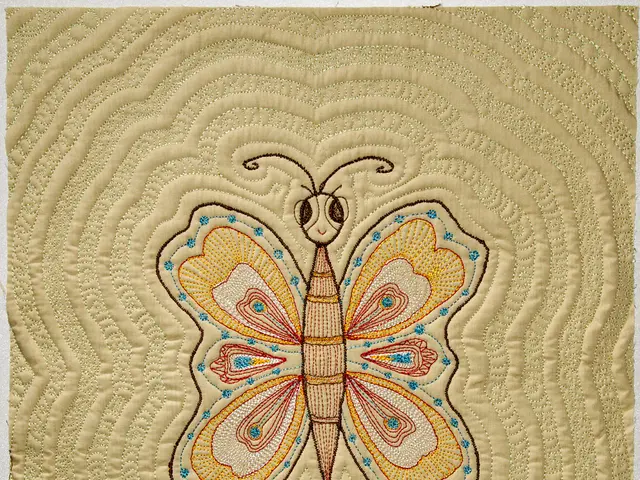Interviews with Pinar Yanardag and Emily Salvador, the dynamic duo behind GLITCH
GLITCH: Revolutionizing Fashion with AI and Empowering Women in STEM
In the heart of Cambridge, Massachusetts, a unique clothing line is making waves in the fashion industry. GLITCH, founded by Pinar Yanardag and Emily Salvador, is a groundbreaking brand that leverages artificial intelligence (AI) to generate one-of-a-kind clothing designs.
The founders were inspired to launch GLITCH due to the lack of emerging technology products designed for women, by women, in the male-dominated field of AI. With a mission to empower women and promote diversity in STEM, GLITCH shares its profits with the Anita Borg Organization, a leading non-profit supporting women in STEM fields.
GLITCH's innovative approach to fashion is evident in their interactive tool, which allows people to use AI and style transfer to design truly unique items of clothing. The tool, currently boasting over 10,000 votes, is a testament to the public's enthusiasm for AI-driven design.
The brand is also working on curating a crowdsourced collection, with customers generating new designs and voting for their favourites to help shape the next collection. This democratic approach to fashion design eliminates the need for technical skill and practice, making design accessible to the public.
GLITCH's AI system, trained using a generative adversarial network (GAN), learns from tens of thousands of fashion designs to generate new, unique designs. The AI is considered another member of the design team, and the brand believes in the power of human-AI collaboration.
The brand's first project, "Little Black Dress-AI" (LBD-AI), was inspired by the 1920s "Little Black Dress" concept. LBD-AI features a combination of unexpected and enchanting elements, such as a normal sleeve accompanied by a bell sleeve, asymmetric details, and more.
In the future, GLITCH aims to research cross-cultural preferences on fashion and discover country-based trends. The brand also envisions AI becoming a powerful assistant in the designing and manufacturing processes, including optimizing for minimum fabric waste.
The development of GLITCH is not confined to fashion design. The next step involves collaborative contributions from performance groups like Berlin-based Interrobang, focusing on projects like "Commune AI" and presenting initial scenes in venues like HAU4 and the HOPE conference in Dortmund.
GLITCH is also working on an AI tool to help people upcycle their existing fashion items into unique designs. With a commitment to democratizing AI-systems, GLITCH believes in the potential of these systems to unleash hidden creativity and empower people from all backgrounds and skill levels. By promoting LBD-AI and GLITCH, the brand aims to raise awareness and increase participation of women in AI, fostering a more inclusive and diverse future in STEM.
Read also:
- Investment secured for Good Fashion Fund 2.0 to the tune of $60 million by FOUNT.
- FetishFinder Profit: Madison's Side Hustle Increases Earnings to $10K Monthly
- Preparing for the Impact of AI on the Future of Fashion Retail Stores: An Overview of Key Developments
- Renovated Bath Gem Unveiled: Introducing No.15 Great Pulteney Street by GuestHouse








